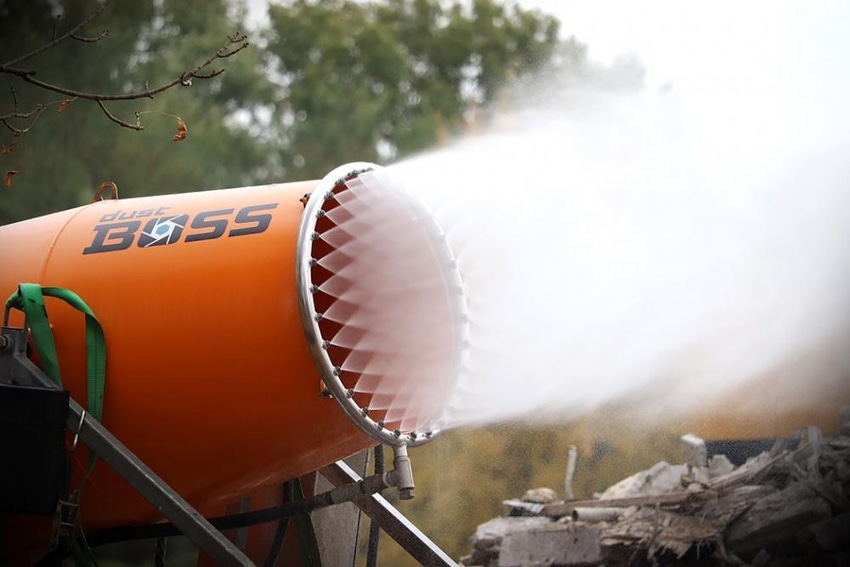VFD System for Dust Suppression
January 8, 2020

In a move designed to bring versatility to its lineup of dust suppression equipment, BossTek introduces an optional variable frequency drive (VFD) system that allows users to adjust air flow to suit a broader range of applications and working environments.
Driven by customer input from various industries, the new VFD system reduces the need to purchase or rent different models to match the machines’ output to specific project requirements, delivering greater flexibility and reducing the total cost of equipment ownership.
“Atomized mist technology has been widely accepted as an extremely effective approach to dust management,” said BossTek sales manager Mike Lewis. “This new development will allow users to tailor the fan speed to match the job. It’s useful in a number of different industries, but one good example would be demolition projects.
“Project managers may need the wide coverage and long reach of our larger models on some jobs, but the volume and throw distance may be too much for smaller projects, such as those in crowded downtown locations. Instead of using a smaller machine to accommodate their changing needs, now they can simply dial back the air flow to match the requirements of those smaller projects.”
Lewis said that the VFD is likely to be attractive to companies with variable needs, including concrete curing, cannabis and hemp operations, transfer stations, slag handling, and indoor applications.
Improved Humidity Control to Concrete Curing Applications
The VFD control will be available via a simple dial or remote control on three of the company’s DustBoss models: the DB-30, DB-45, and DB-60. All three use specialized nozzles and a ducted fan design to atomize the water flow into droplets 50-200 microns in size, which is the optimum for most dust control applications. Matching the droplets to the most common particle sizes delivers the greatest opportunity for them to collide and fall to the ground.
“In some applications, a high air flow speed is a distinct advantage, delivering a long throw,” Lewis continued. “But in others, the speed and volume may be a disadvantage. Now users can dial in the speed and throw distance as their requirements change. The variability will range from just a few RPMs up to the maximum delivered by each model.”
BossTek, Peoria, IL 309-693-8600 www.bosstek.com
More articles that may interest you:
How Much Do You Know About NFPA 652?
What You Need to Know About the New Edition of NFPA 652
Extracting Combustible Dusts at the Source
How to Use Dust Explosion Test Data to Ensure Facility Safety
Explosion Containment: A Comparison
You May Also Like


